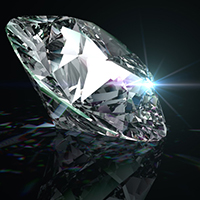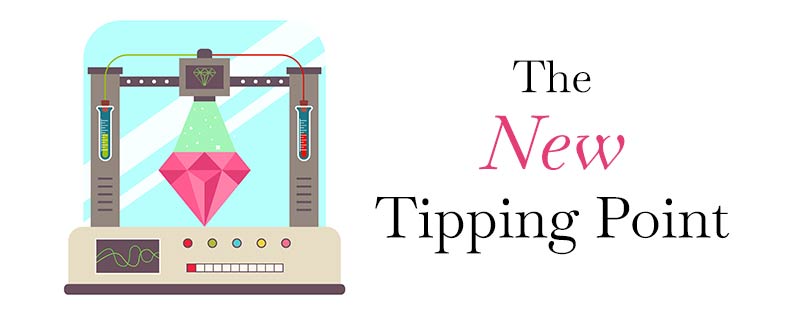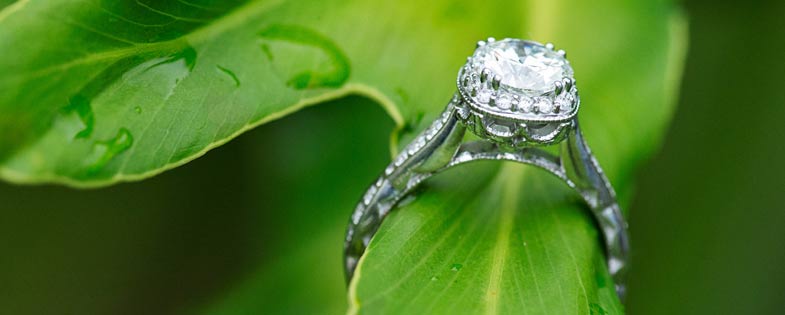

Are Synthetic Diamonds On Your Radar?
Over the course of the last year or two we’ve made it a point to discuss synthetic diamonds with our clients – lab-grown diamonds, we’ve pointed out, have the potential to quickly become popular with bridal consumers, particularly millennials. We’ve wanted to make sure that synthetic diamond production was on everyone’s radar (if it wasn’t already). Some clients were immediately receptive – we’ve had a client or two dip their toe in the synthetic water, and find that there is in fact a growing want for lab-grown diamonds in their market(s). Others treated the topic as something to be tabled a few years down the road.
As anticipated, slowly, the synthetic side of the industry has been growing. Earlier this month, the establishment of the International Grown Diamond Association (IGDA) was announced – big news in the lab-grown world, and in the jewelry industry overall. The formation of the IGDA brings some much needed organization to the synthetic side of the industry. Finally, the natural diamond sector (World Federation of Diamond Bourses or “WFDB”) will be able to communicate with the lab-grown sector (International Grown Diamond Association or “IGDA”). According to Rapaport, this “may actually serve as a wake-up call for the industry”.
In a statement to Rapaport News made on February 4, the IGDA “outlined that it aims to represent the lab-grown diamond industry, promote grown diamonds as a new choice and educate customers about the unique qualities and applications of grown diamonds. The IGDA seeks to serve as the central point of communication, education, development and growth of the industry”, according to the statement. The group will not be a policing body, for now at least, but be a “group of like-minded people in the grown diamond industry [that have] formed the association based on certain best practice principles. All members would have to follow these and disclosure is a central part of this”, said an IGDA spokesperson to Rapaport News.
Obviously, synthetic diamond producers are looking to gain more market share, and the formation of the IGDA is a big step in that process. Rapaport is calling the move a potential wake-up call to the industry – as the producers of synthetic diamonds become more organized and seek to communicate their message more to the public. Lab-grown diamond awareness will continue to grow only at a now faster pace. As I’ve mentioned, lab-grown diamonds offer benefits especially attractive to millennials – the cost is typically lower, the diamonds are not mined and therefore will not affect the planet, etc. There are counterarguments that can be made on each point by the other side, but the bottom line is that the natural diamond side of the industry must be ready to communicate equally to the public the benefits of diamonds sourced from the earth, or some real market share could be lost over time.
On a more local level, the more consumers are made aware of a lab-grown diamond alternative, the more that demand for such diamonds is expected to rise. Those jewelers who get out in front of this and offer synthetic diamonds could not only gain a distinct advantage over their competition, but also draw in clientele from surrounding markets that don’t offer this alternative (as we’ve seen with some of our jewelers). So far from what we’ve seen, there isn’t a lot of downside.
If you’re interested in reading more about the IGDA announcement, check out Avi Krawitz’s article here.
And as always, if you’re interested in improving your marketing and your business overall, we’re happy to chat – contact us at suits@fruchtman.com.




edward
February 23, 2016 5:13 pmI’ve been in the industry for over 30 years and have witnessed synthetics rubies, emeralds and sapphires that came to the market place. It would be a rear occasion to see those in the showcases of any reputable jeweler.
Synthetic diamonds are not that much less expensive then the natural once but the big question is (and I’ve never heard anyone answering this question): what are they worth on resale market?
theresia
February 23, 2016 6:18 pminteresting question. on the resale market. how will you know if there is no accompanying documentation? it is my understanding it takes a lab to determine the difference between lab-grown and natural.
Fruchtman Marketing
February 24, 2016 11:39 amLab grown diamonds have grading reports just as natural diamonds do. Of course, they are noted as being lab grown. From a marketing perspective, lack of public awareness is certainly a factor in mass public consumption, as is the idea of having a naturally grown diamond. However, it appears that the International Grown Diamond Association (IGDA) is the beginning of a central governing body that could begin to develop the public awareness side of the issue. The question will come down to how the public responds and that could depend on how the product is marketed to consumers.